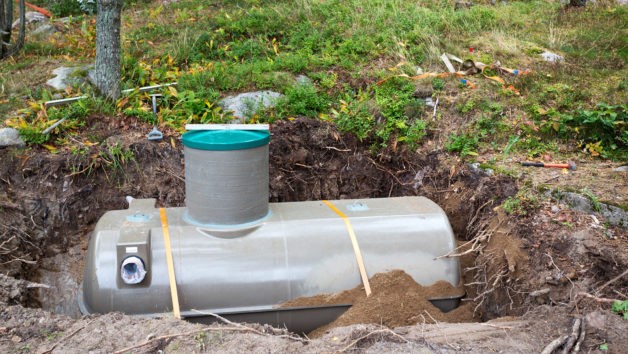
The correct working pump size is determined by the site conditions and the reason for the pump. The pump has its distinct operating curve dependent on the quantity of water (in gallons per minute or GPM) that must be supplied and the total dynamic head (TDH, feet), which the pump will overrun to deliver effluents.
The septic pump basics
When the pump has to transfer septic tank effluent to a higher dropbox, which flows gravitationally into the trenches, it has to provide at least 10 GPM and not more than 45 GPM to the dropbox.
The minimum guarantees that the pump is running fast enough to keep the device from washing machines and dishwashers ahead of discharge. The maximum allows for a time-consuming effluent flow from the dropbox out into the ground treatment system. During this flow case, TDH will be measured when a difference in elevation from the pump is put in the dropbox and a loss of friction is estimated in the pipes. You will then be able to visit the pump manufacturer and ask which effluent pumps are available for certain distribution specifications and hydraulic head specifications.
When the pump sends effluent to a pressure distribution system, the delivery and specifications for the head have to be determined, however, the procedure becomes much more complicated. The number and the size of the pumps (orifices) in the pressure distribution system determine the pump capacity needed.
The volume and pump capacity to push effluent uniformly out of orifices is the flow needed to pressurize the lateral ones. This volume is the amount of fluid needed to fill the sides and is determined by the dosage volume on the sides. The pumping capability depends on the diameter of the hole (typically 1/8 to 1/4 inch) and the device number of holes.
In this calculation, the second component is the lowest pressure delivered to every opening. The higher the friction, the greater the flow, but the harder the device can be inserted. This is important as friction loss grows as pumping capacity (flow rate) increases. Both affect pump size and cost directly.
Care should be taken to design or change the pressure distribution system. Ensure the improvements to pump sizing components you create in the field are correlated. Changing or increasing the number of holes (even if the practice of drilling) increases the flow and pumping capacity required
The Head estimate
You will quantify or estimate three components to decide the head requirement.
The first – The difference in elevation. Here you calculate the upright distance (in feet) to the discharge point (high discharge laterals) from the top of the pump in the pump chamber.
The other component is the loss of friction in the supply pipe and the side. The lack of friction depends on the size of the pipe and its flow rate. More friction loss is the smaller the pipe. The more friction loss is generated by the pipe. The loss of friction in the distribution pipe often involves the unions or other fittings that attach to the pressure controller. The loss for each fit or a thumb rule calculation can be determined by adding 25% to the friction loss for the pipeline.
The third part of the friction losses includes losses in other parts, such as a splitter valve or other valves of the pressure system. For pressure delivery piping you can add friction loss – typically measured for an additional five feet of the head using 2-inch pipes. (If the distribution manufacturer is smaller, the loss in the distribution manufacturer could be much larger.)